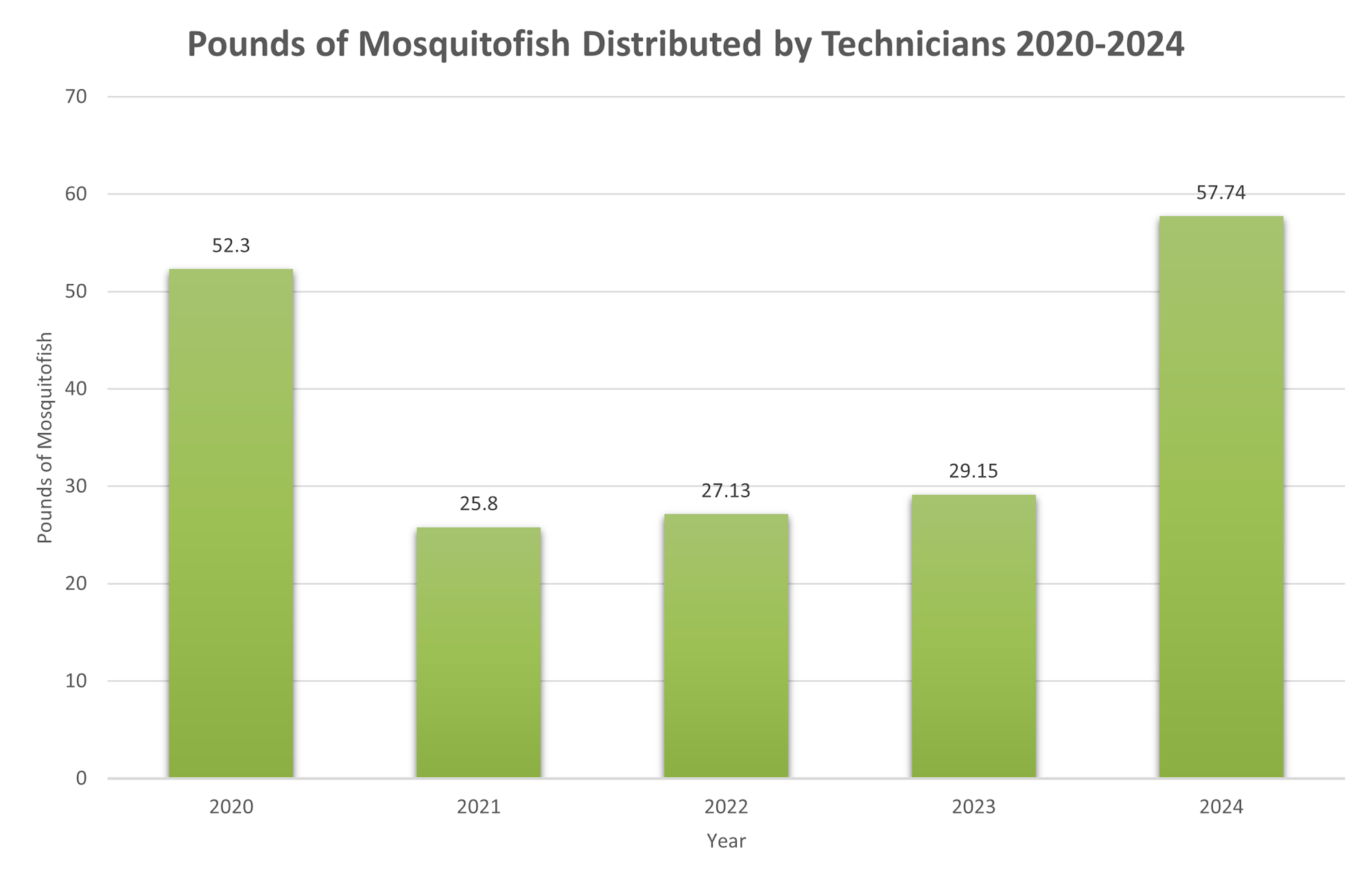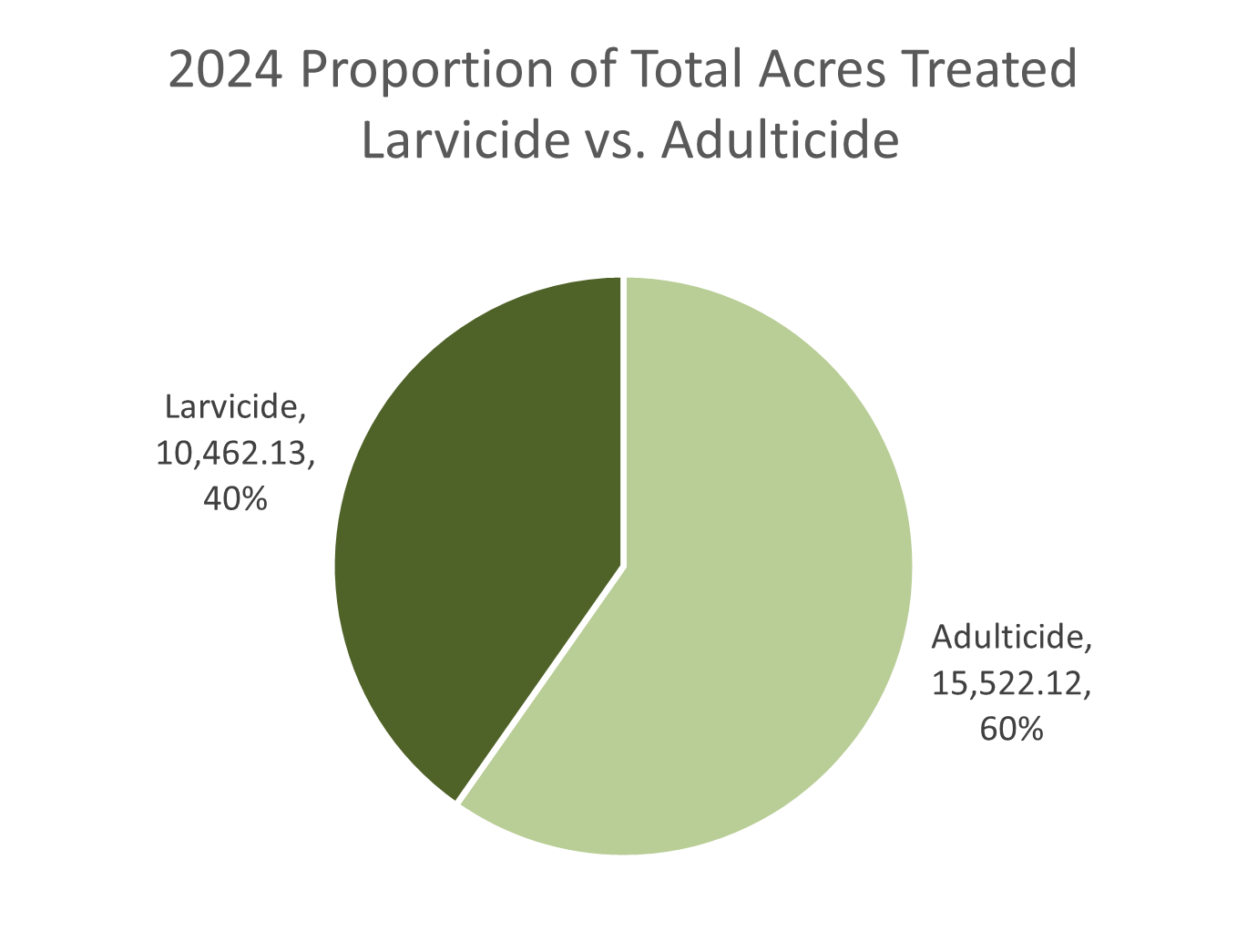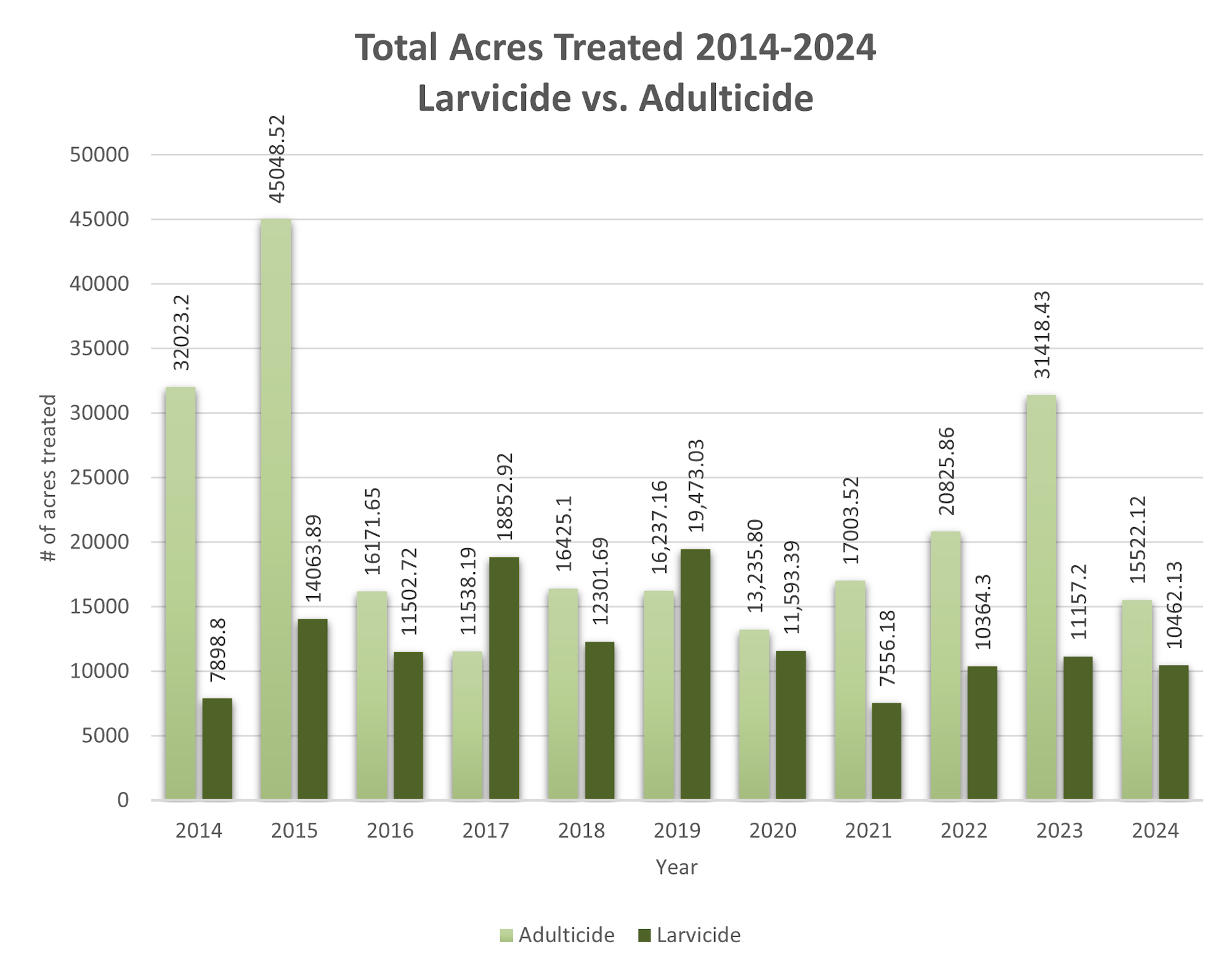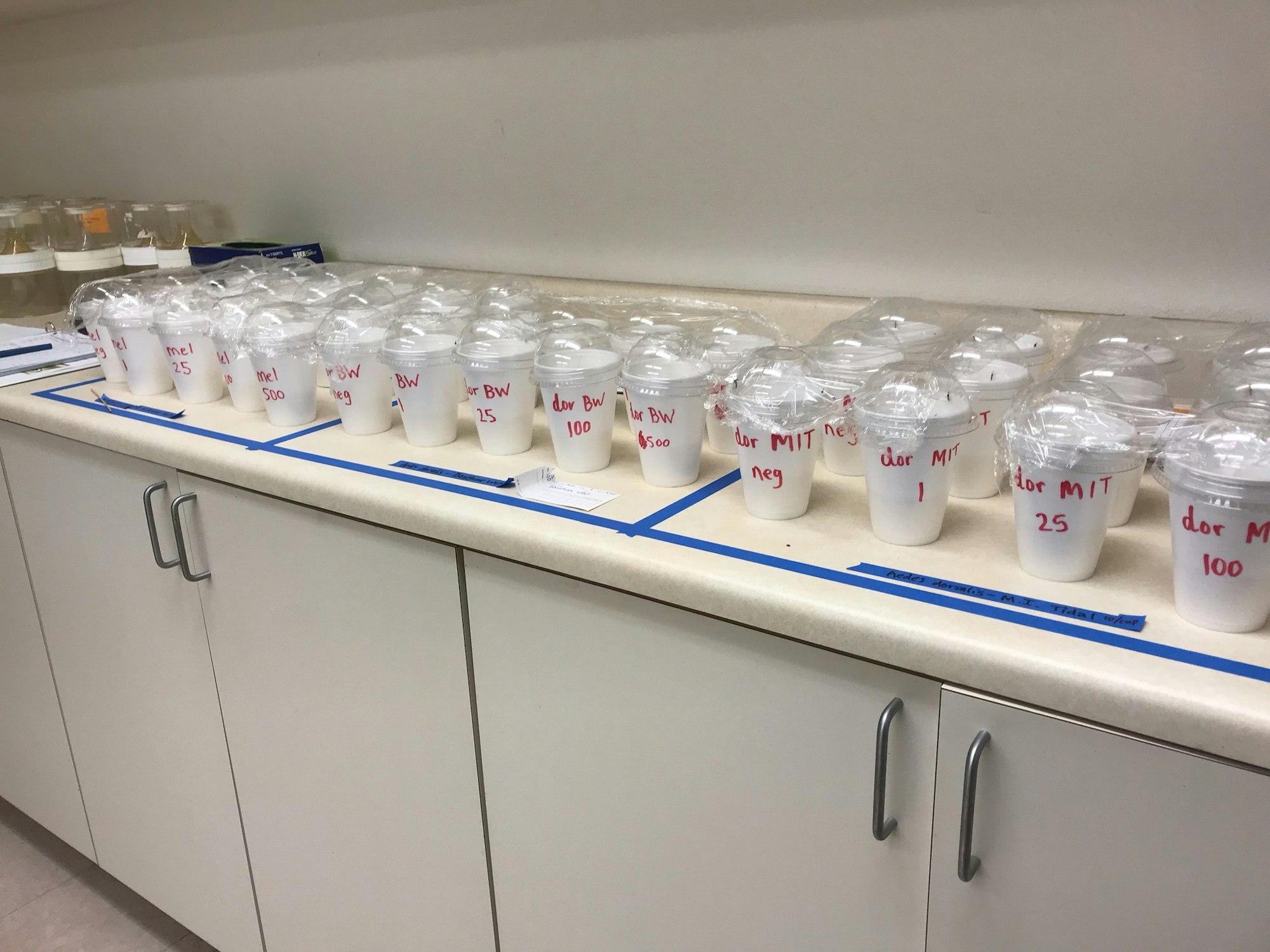Integrated Vector Management
It is our goal at the Solano County Mosquito Abatement District to cause a significant interruption the mosquito lifecycle whenever possible, to reduce the overall mosquito population in Solano County, thus decreasing not only the nuisance to our community but the likelihood of arboviruses such the West Nile Virus spreading to members of the public.
To achieve this goal the SCMAD utilizes an Integrated Vector Management (IVM) Program. IVM is a rational decision-making process for the optimal use of resources for vector control. The goal of IVM is to improve the efficacy, cost-effectiveness, ecological soundness and sustainability of disease-vector control. Additionally, when compared to traditional pest control methods IVM is a more environmentally conscious method of mosquito control. The Solano County Mosquito Abatement District’s IVM program integrates biological and disease surveillance information into selecting the appropriate abatement method. For more about IVM click here:
MVCAC Integrated Vector Management (2020)Physical Control
The most effective method of controlling mosquitoes is to drain any stagnant standing water where mosquitoes breed, this method of physically manipulating mosquito breeding habitat is referred to as “Physical Control.” Physical controls utilized by the SCMAD can be broken into two different types:
Source Elimination/Reduction

Eliminates a larval habitat by modifying the landscape to allow for better drainage of precipitation or stopping a source of regular precipitation. Habitat modification or elimination can be as complex as adding drainage canals to a marsh or as simple as cleaning gutters, flushing dog water bowls weekly or covering a pool/spa that is in disrepair.
Source Maintenance
When a source of mosquitoes cannot be eliminated completely source maintenance is a practice that can reduce the population of mosquitoes. Source management often includes water management, vegetation management, as well as infrastructure maintenance such as flood gate maintenance. This method of habitat reduction is often employed at duck clubs when lowlands are flooded to create a desirable duck habitat prior to duck hunting season. This method of habitat reduction does require more labor hours to monitor for mosquito breeding and to apply a chemical treatment when necessary.
Physical control may not always be a practical method of mosquito abatement due to the practical limitations due to size, logistical hurdles or cost. For this reason, the SCMAD utilizes biological and chemical methods to reduce mosquitoes to complete their life cycle and reproduce.
Biological Control Methods

When a waterbody does not drain regularly or is permanent but not suitable for physical control such as source elimination, reduction, or maintenance it may be selected as a candidate for biological control. Biological Control is when control of the mosquito population is accomplished by introducing/increasing mosquito predator population influencing the food web in the mosquitoes’ ecosystem.
At the SCMAD we breed and purchase live mosquitofish which are dispensed to the public free of charge for use on private property, in places such as ornamental ponds, cattle troughs, broken swimming pools, and large fountains. The SCMAD staff with also stock the mosquitofish in environments such as golf course, country club ponds, water treatment facilities, and stock ponds which do not have a population of predatory fish.
Mosquitofish are ideally suited for the job of biological control because they are small (under 2.5in length), able to reproduce quickly, mosquitofish have also been recorded eating up to two times their body mass in mosquito larvae per day, and are extremely resilient to harsh environmental conditions where other aquatic predators might not survive. Stocking mosquitofish in a permanent water feature can mean months or even years of effective mosquito control. For this reason, the SCMAD Mosquitofish program has become a favorite with the public. In 2024 the SCMAD distributed a estimated 57.74 lbs of mosquitofish throughout Solano County providing long lasting, pesticide free mosquito abatement.

Chemical Control Methods




When physical and biological control methods are not viable options to reduce the mosquito population the SCMAD can select a chemical control method that will reduce the number of mosquitos to acceptable levels. The SCMAD works diligently to select and use all of our chemical pesticides in a manner which poses the lowest possible risk to both the public and the environment.
The chemical pesticides used by the Solano County Mosquito Abatement District can be classified into two different categories larvicides and adulticides.

Larvicides
Larvicides are insecticides that target mosquitoes in the larval stage of their life cycle. Larvicides are by far the most heavily used form of insecticide used by the SCMAD. Most larvicides used by the SCMAD contain the active ingredient Methoprene. Methoprene is frequently used as a public health pesticide because it poses a very low risk to residents and their animals, while at the same time reducing the amount of biting adult mosquitoes that emerge from an aquatic environment.

In 2024 these larvicides were deployed by ATV, hand, drone/UAS, fixed-wing aircraft and helicopter. This type of insecticide was crucial to controlling the mosquito populations that developed in the bayshore in late winter as well as spring and summer, as well as mosquito populations that developed in the fall when duck clubs are flooding prior to duck hunting season.

Adulticides
Adulticides are chemical pesticides that target mosquitoes in their adult life stage. Adulticides utilized by the SCMAD are effective in rapidly reducing the adult mosquito population in a specific area for a short period of time, however, if the mosquito habitat is not eliminated or treated an adulticide treatment will not provide long lasting results. Adulticides used by the Solano County Mosquito Abatement district are not target specific and could affect the beneficial insect population. For this reason, the SCMAD generally only applies adulticides in/around areas that have known arbovirus activity to reduce the risk of arbovirus transmission. To date in Solano County adulticides are ONLY deployed by ground vehicles or using a hand applicator. The Solano County Mosquito Abatement has never applied adulticides using aircraft.

